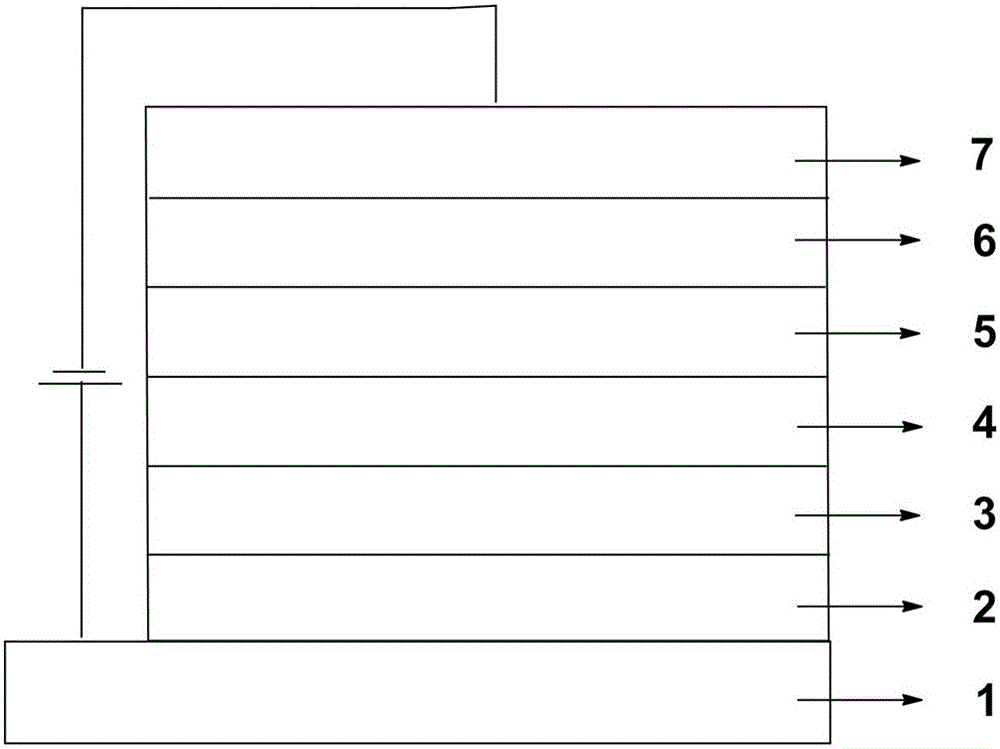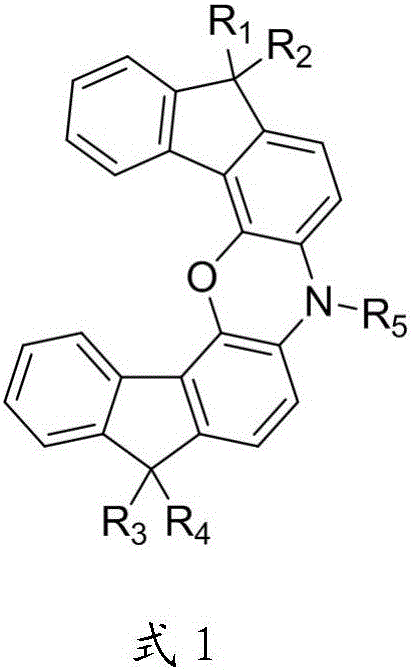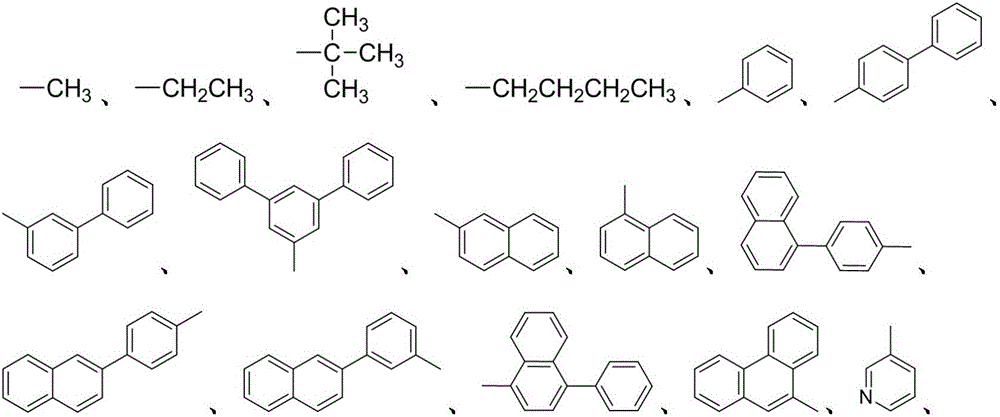Bisindenophenoxazine organic electroluminescence materials and application thereof
A phenoxazine and electroluminescence technology, applied in the fields of luminescent materials, organic chemistry, circuits, etc., can solve problems such as the reduction of quantum efficiency, and achieve the effect of enhanced conjugation effect, good film stability, and difficulty in crystallization
- Summary
- Abstract
- Description
- Claims
- Application Information
AI Technical Summary
Problems solved by technology
Method used
Image
Examples
Embodiment 1
[0041] Embodiment 1: the preparation of compound C02
[0042]
[0043]
[0044] Preparation of Compound 1: In a 1L three-necked flask, add iodomethane (21.29g, 0.15mol), phenoxazine (18.32g, 0.1mol), xylene (450g), under nitrogen protection, add sodium tert-butoxide (19.20 g, 0.2mol), palladium acetate (0.246g, 1%mol), Xantphos (1.161g, 2%mol), heat up, keep the temperature at 120°C for 12h, cool down to 30°C, wash the reaction solution with water, separate the liquid, and anhydrous sulfuric acid Magnesium is dried, and desolvation, and gained brownish-yellow oily thing uses 50g sherwood oil to dissolve, carries out column chromatography (petroleum ether washing) by 25cm thick silica gel column, collects the passing column liquid that contains product, then desolvation, sherwood oil room temperature Slurry, filter with suction and dry to obtain compound 1, 12.88 g of light yellow solid, yield 65.3%, MS (m / s): 197.1.
[0045]Preparation of Compound 2: In a 1L three-neck ...
Embodiment 2
[0051] Embodiment 2: the preparation of compound C03
[0052]
[0053] Preparation of Compound 6: Using 4,4'-dicyanobenzophenone instead of benzophenone as a raw material, according to the method described in Example 1 (preparation of Compound 5), 4.64g (0.02mol) 4,4 '-Dicyanobenzophenone, the crude product of compound 6 was obtained, which was directly used in the next reaction without further purification.
[0054] Preparation of Compound C03: Using Compound 6 instead of Compound 5 as a raw material, according to the method described in Example 1 (preparation of Compound C01), 0.01mol (theoretical value) of Compound 6 was added to obtain Compound C03, a light yellow solid 4.70g, yield 60.4%.
[0055] High resolution mass spectrometry, ESI source, positive ion mode, molecular formula C 55 h 31 N 5 O, theoretical value 777.25, test value 777.39. Elemental analysis (C 55 h 31 N 5 O), theoretical value C: 84.92, H: 4.02, N: 9.00, O: 2.06, measured value C: 84.89, H: 4...
Embodiment 3
[0056] Embodiment 3: the preparation of compound C05
[0057]
[0058] The preparation of compound 7: use bromoethane instead of methyl iodide as raw material, according to the method described in Example 1 (preparation of compound 1), put in 16.35g (0.15mol) bromoethane to obtain the refined product of compound 7, 9.53g of light yellow solid , yield 45.1%, MS (m / s): 211.1.
[0059] Preparation of Compound 8: Using Compound 7 instead of Compound 1 as a raw material, according to the method described in Example 1 (preparation of Compound 2), 21.13 g (0.1 mol) of Compound 7 was added to obtain the refined product of Compound 8, 16.64 g of a light yellow solid, and the yield was Rate 45.1%, MS (m / s): 368.9.
[0060] Preparation of Compound 9: Using Compound 8 instead of Compound 2 as a raw material, according to the method described in Example 1 (preparation of Compound 3), 36.91 g (0.1 mol) of Compound 8 was added to obtain the refined product of Compound 9, 37.24 g of light...
PUM
 Login to View More
Login to View More Abstract
Description
Claims
Application Information
 Login to View More
Login to View More - R&D
- Intellectual Property
- Life Sciences
- Materials
- Tech Scout
- Unparalleled Data Quality
- Higher Quality Content
- 60% Fewer Hallucinations
Browse by: Latest US Patents, China's latest patents, Technical Efficacy Thesaurus, Application Domain, Technology Topic, Popular Technical Reports.
© 2025 PatSnap. All rights reserved.Legal|Privacy policy|Modern Slavery Act Transparency Statement|Sitemap|About US| Contact US: help@patsnap.com



